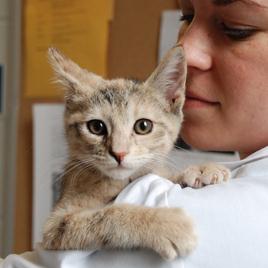 Our pediatricians are here not only to provide preventive health care such as vaccinations, but also to diagnose and treat disorders that are unique to puppies and kittens. Fading puppy or kitten syndrome? Growth abnormalities? Or just not doing well? Please see our pediatricians right away.
Our pediatricians are here not only to provide preventive health care such as vaccinations, but also to diagnose and treat disorders that are unique to puppies and kittens. Fading puppy or kitten syndrome? Growth abnormalities? Or just not doing well? Please see our pediatricians right away.
Our pediatricians are here to provide your puppy or kitten with all of the preventive programs, such as vaccinations, parasite control, nutritional advice, and other counseling, so that your pet gets off to a great start in life.
Should your young pet be ill, our specialists understand that puppies and kittens are not just small versions of adults, but that they have needs and illnesses that are unique to their age group.
Whether it is an infection or a hereditary disorder, we are here to diagnose the problem, offer treatment options, and provide recommendations for follow-up care.